
The Natural Splendor of Acadia National Park
Discover the rugged beauty and serene landscapes of Acadia National Park, where the Atlantic Ocean meets the peaks of the Appalachian mountains in Maine.
Acadia National Park, located in the rugged coast of Maine, is a destination that captures the hearts of nature lovers and adventurers alike. Here, the Atlantic Ocean meets the granite peaks of the Appalachian mountains, creating a landscape that is both dramatic and serene. The park covers over 47,000 acres of woodland, rocky shores, and towering mountains, offering a diverse array of activities and sights for visitors. One of the park's highlights is Cadillac Mountain, the highest point along the North Atlantic seaboard. From its summit, visitors can enjoy breathtaking sunrise views, often being the first in the United States to see the sun rise during certain times of the year. The park's extensive network of hiking trails, including the popular Precipice Trail and Jordan Pond Path, cater to all levels of hikers and offer stunning vistas of the surrounding scenery. Acadia's coastline is equally captivating, with places like Sand Beach offering a unique spot to relax and take in the views. The park is also a haven for wildlife enthusiasts. With opportunities to see peregrine falcons, moose, and seals, among others, it is a living testament to nature's beauty. Whether you're exploring by foot, bike, or even by car along the scenic Park Loop Road, Acadia National Park promises an unforgettable experience. Visitors can also enjoy the charming town of Bar Harbor, which serves as a gateway to the park. This quaint town offers a variety of dining options, local shops, and cultural experiences, making it a perfect base for your adventure. With its blend of natural beauty and small-town charm, Acadia National Park is a must-visit destination for anyone looking to reconnect with the great outdoors.
Local tips in Acadia National Park
- Visit Cadillac Mountain at sunrise for an unforgettable experience.
- Bring proper hiking gear as some trails can be challenging.
- Explore Bar Harbor for dining and shopping after a day in the park.
- Check park schedules for ranger-led programs and activities.
- Use the Island Explorer shuttle to get around the park without a car.
The Natural Splendor of Acadia National Park
Acadia National Park, located in the rugged coast of Maine, is a destination that captures the hearts of nature lovers and adventurers alike. Here, the Atlantic Ocean meets the granite peaks of the Appalachian mountains, creating a landscape that is both dramatic and serene. The park covers over 47,000 acres of woodland, rocky shores, and towering mountains, offering a diverse array of activities and sights for visitors. One of the park's highlights is Cadillac Mountain, the highest point along the North Atlantic seaboard. From its summit, visitors can enjoy breathtaking sunrise views, often being the first in the United States to see the sun rise during certain times of the year. The park's extensive network of hiking trails, including the popular Precipice Trail and Jordan Pond Path, cater to all levels of hikers and offer stunning vistas of the surrounding scenery. Acadia's coastline is equally captivating, with places like Sand Beach offering a unique spot to relax and take in the views. The park is also a haven for wildlife enthusiasts. With opportunities to see peregrine falcons, moose, and seals, among others, it is a living testament to nature's beauty. Whether you're exploring by foot, bike, or even by car along the scenic Park Loop Road, Acadia National Park promises an unforgettable experience. Visitors can also enjoy the charming town of Bar Harbor, which serves as a gateway to the park. This quaint town offers a variety of dining options, local shops, and cultural experiences, making it a perfect base for your adventure. With its blend of natural beauty and small-town charm, Acadia National Park is a must-visit destination for anyone looking to reconnect with the great outdoors.
When is the best time to go to Acadia National Park?
Iconic landmarks you can’t miss
Bass Harbor Head Light Station
Experience the historic Bass Harbor Head Light Station, a scenic landmark offering stunning coastal views and a glimpse into Maine's maritime heritage.

Thunder Hole
Experience the captivating thunderous waves at Thunder Hole in Bar Harbor, a must-see natural attraction in Acadia National Park.

Jordan Pond House Restaurant
Experience the iconic flavors of Maine at Jordan Pond House, a scenic restaurant in Acadia National Park known for its popovers and stunning views.

Hulls Cove Visitor Center
Explore Acadia National Park from the Hulls Cove Visitor Center, your hub for adventure, information, and unforgettable experiences in Maine's natural wonder.

Cadillac Mountain
Discover the breathtaking beauty of Cadillac Mountain, the highest point on the East Coast, in Acadia National Park, Maine.

Asticou Azalea Garden
Discover the serene beauty of the Asticou Azalea Garden in Mount Desert, Maine, a stunning botanical oasis filled with vibrant blossoms and tranquil landscapes.
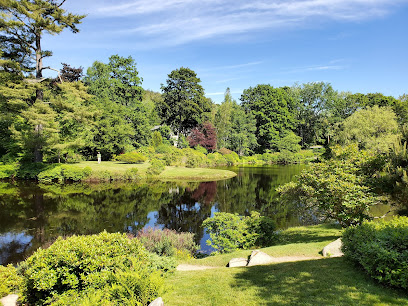
Wild Gardens of Acadia
Discover the Wild Gardens of Acadia in Bar Harbor, Maine – a peaceful botanical retreat showcasing the region's stunning native flora and serene landscapes.

Jordan Pond Trailhead
Discover the breathtaking beauty of Jordan Pond Trailhead in Acadia National Park, a perfect hiking destination with stunning views and rich wildlife.

Ocean Path Trailhead
Discover the stunning Ocean Path Trailhead in Bar Harbor, Maine, a must-visit hiking area with breathtaking coastal views and natural beauty.

Jordan Pond
Discover the tranquil beauty of Jordan Pond in Acadia National Park, where stunning views and peaceful nature await every visitor.
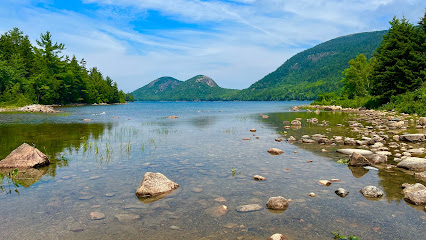
Thuya Garden
Experience the serene beauty of Thuya Garden in Northeast Harbor, Maine, an enchanting escape into nature filled with vibrant blooms and tranquil landscapes.

Bubble Rock
Discover the breathtaking views and unique geological features at Bubble Rock in Acadia National Park, a must-visit scenic spot in Maine.
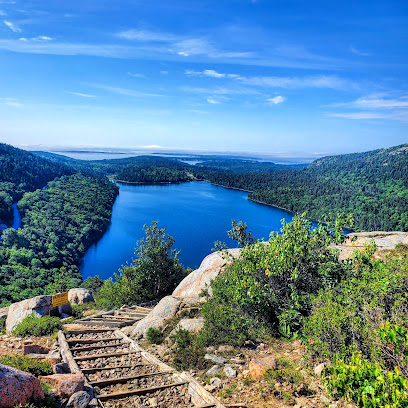
Acadia National Park Tours
Discover the breathtaking beauty of Acadia National Park, where stunning landscapes and outdoor adventures await every traveler.
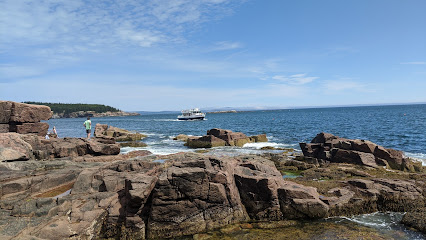
Mt Desert Island
Explore the breathtaking landscapes and vibrant culture of Mt Desert Island, a nature lover's paradise in Maine, home to Acadia National Park.

George B. Dorr Museum of Natural History
Discover the rich biodiversity and geological history of Maine at the George B. Dorr Museum of Natural History, a must-visit for nature lovers.

Unmissable attractions to see
Bass Harbor Head Light Station
Explore the historic Bass Harbor Head Light Station, a stunning lighthouse with breathtaking coastal views and rich maritime history in Maine.

Thunder Hole
Experience the stunning natural power of Thunder Hole in Bar Harbor, Maine, where ocean waves create a thunderous spectacle against rugged cliffs.

Thunder Hole
Discover the thunderous beauty of Thunder Hole, where crashing waves meet rugged cliffs in Acadia National Park, Maine's coastal gem.

Hulls Cove Visitor Center
Explore the Hulls Cove Visitor Center, the gateway to Acadia National Park, offering insights, breathtaking views, and essential resources for your adventure.

Agamont Park
Explore the stunning views and serene atmosphere of Agamont Park in Bar Harbor, a tranquil oasis perfect for relaxation and outdoor activities.

Pirate's Cove Adventure Golf
Experience the adventure of Pirate's Cove Adventure Golf in Bar Harbor, where whimsical pirate-themed holes and lush landscapes await for a day of fun and laughter.
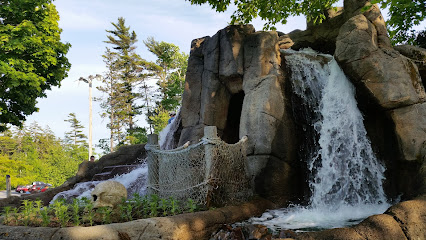
Acadian Boat Tours
Discover the beauty of Acadia National Park with Acadian Boat Tours, offering unforgettable marine adventures in Bar Harbor, Maine.
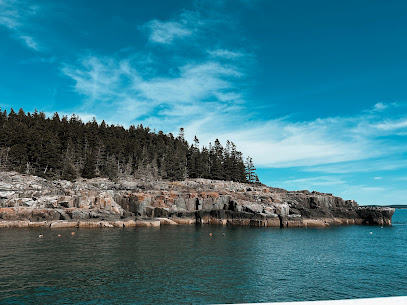
Cadillac Mountain
Experience the stunning panoramic views and natural beauty of Cadillac Mountain, the highest point on the U.S. East Coast, in Acadia National Park.

Village Green
Explore the tranquil Village Green, a picturesque park in Bar Harbor, Maine, perfect for relaxation, picnics, and community events amidst nature's beauty.

Village Green
Discover the beauty and tranquility of Village Green, a charming park in Bar Harbor, Maine, perfect for relaxation and community events.

Sand Beach
Experience the stunning natural beauty and tranquility of Sand Beach in Bar Harbor, Maine, a perfect destination for beach lovers and nature enthusiasts.
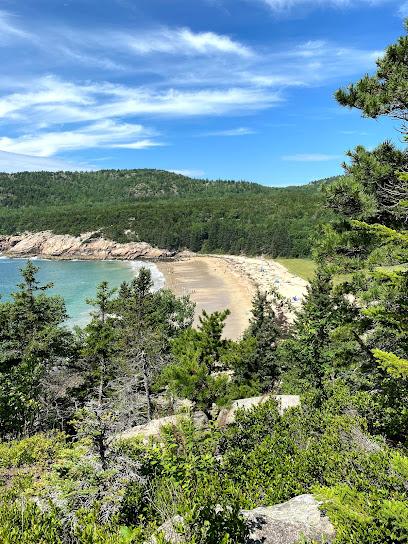
Schoodic Point
Experience the breathtaking coastal views and serene hiking trails at Schoodic Point, a hidden gem in Acadia National Park, Maine.

Asticou Azalea Garden
Explore the serene beauty of Asticou Azalea Garden in Mt. Desert, Maine, where vibrant blooms and peaceful pathways create a botanical paradise.

Asticou Azalea Garden
Discover the beauty of Asticou Azalea Garden, a serene botanical paradise in Mt. Desert, Maine, featuring stunning azaleas and tranquil landscapes.

Beehive Trail
Discover the breathtaking Beehive Trail in Bar Harbor, Maine, featuring stunning views and exhilarating hiking experiences amidst nature's beauty.

Essential places to dine
Side Street Cafe
Discover Side Street Cafe in Bar Harbor - where delicious American cuisine meets charming atmosphere and local flavors.

Geddy's
Experience the best of Maine’s seafood at Geddy’s, a family-friendly restaurant in Bar Harbor offering delicious dishes and local flavors.

Jordan's Restaurant - Breakfast - Lobster Rolls - Burgers - Pancakes - Sandwiches
Experience the best breakfast in Bar Harbor at Jordan's Restaurant - featuring lobster rolls, pancakes, burgers & more made from fresh local ingredients.

Stewman's Lobster Pound
Discover the ultimate seafood experience at Stewman's Lobster Pound in Bar Harbor - where freshness meets flavor in every bite.

Jordan Pond House Restaurant
Experience exquisite American cuisine at Jordan Pond House Restaurant amidst breathtaking views in Acadia National Park.

Thirsty Whale Tavern
Discover Bar Harbor's culinary gem at Thirsty Whale Tavern - where fresh seafood meets hearty burgers in a vibrant setting.

Galyn's
Experience exquisite seafood dining at Galyn's in Bar Harbor—where fresh flavors meet breathtaking views.

Cafe This Way
Experience delightful American cuisine at Cafe This Way in Bar Harbor - perfect for breakfast or lunch with a vibrant cocktail bar.

The Chart Room
Experience the best seafood with breathtaking waterfront views at The Chart Room in Bar Harbor – a true taste of Maine's coastal charm.

West Street Cafe
Discover Bar Harbor's gem for fresh seafood and delightful drinks at West Street Cafe - where every bite tells a story.

Blaze
Experience wood-fired flavors and local craft beers at Blaze in Bar Harbor - where every meal is a celebration of Maine's culinary heritage.
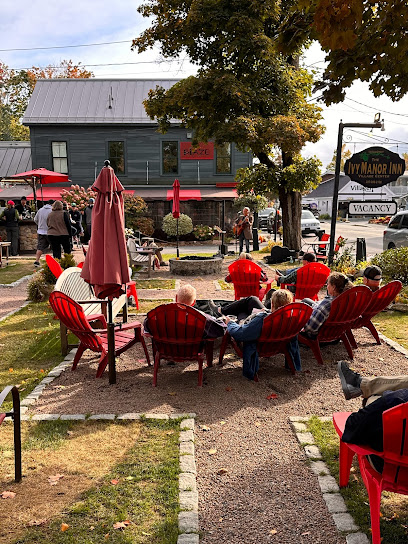
The Travelin Lobster, LLC
Savor fresh seafood at The Travelin Lobster in Bar Harbor—your ultimate destination for delicious crab dishes and coastal charm.

Route 66 Restaurant
Discover Route 66 Restaurant in Bar Harbor - where delicious American comfort food meets fresh seafood in a cozy family-friendly setting.

Paddy's Irish Pub & Restaurant
Discover the charm of Ireland at Paddy's Irish Pub & Restaurant in Bar Harbor - your destination for hearty meals and vibrant atmosphere.

2 Cats Bar Harbor
Discover delicious breakfast delights at 2 Cats Bar Harbor - where cozy meets culinary creativity in beautiful Maine.

Markets, malls and hidden boutiques
Sherman's Maine Coast Book Shop Bar Harbor
Explore Sherman's Maine Coast Book Shop in Bar Harbor, a literary treasure trove featuring a wide selection of books and unique toys for all ages.

Cool As A Moose
Explore Cool As A Moose in Bar Harbor, Maine, your go-to spot for unique gifts, clothing, and souvenirs that celebrate the charm of local culture.

Cadillac Mountain Gift Shop
Discover the charm of Cadillac Mountain Gift Shop, where unique Acadia souvenirs meet stunning mountain views.

A LITTLE MAD shop
Explore A LITTLE MAD shop in Bar Harbor for unique local art and quirky gifts that embody the spirit of Maine's creativity.

Otter Creek Market
Explore the flavors of Maine at Otter Creek Market, your go-to grocery store for fresh produce and local specialties near Acadia National Park.

The Acadia Country Store
Explore The Acadia Country Store for unique Maine-made gifts and souvenirs, capturing the essence of Bar Harbor's coastal charm.
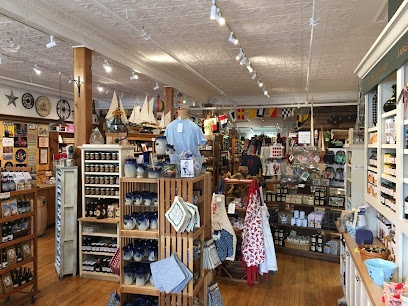
Acadia World Traders
Discover unique handcrafted treasures at Acadia World Traders, where local artistry meets charming shopping in the heart of Trenton, Maine.

In the Woods
Discover unique local crafts and outdoor gear at In the Woods, a charming store in Bar Harbor, Maine, reflecting the essence of the region.

The Rock and Art Shop
Discover unique gifts and local art at The Rock and Art Shop in Bar Harbor, a perfect stop for tourists seeking Maine souvenirs.

Willis' Rock Shop
Explore the charm of Willis' Rock Shop in Bar Harbor, where handcrafted jewelry and unique gifts reflect Maine's natural beauty.

The Acadia Shop
Discover handmade treasures and local crafts at The Acadia Shop in Bar Harbor, a perfect stop for unique gifts and Maine-inspired apparel.

The Maine Store
Explore The Maine Store in Bar Harbor for unique gifts and locally crafted treasures that celebrate the spirit of Maine.

The Kimball Shop
Explore The Kimball Shop in Northeast Harbor for unique Maine gifts and charming local crafts that capture the spirit of the region.

Geddy's By The Sea (formerly Patrick's By The Sea)
Explore Geddy's By The Sea for unique gifts and local treasures in Bar Harbor, Maine, capturing the essence of coastal charm.

My Darling Maine Island Boutique
Discover unique gifts and local treasures at My Darling Maine Island Boutique in Bar Harbor, Maine - a must-visit for tourists seeking authentic souvenirs.

Essential bars & hidden hideouts
Side Street Cafe
Experience the vibrant flavors of American cuisine at Side Street Cafe in Bar Harbor, where local charm meets culinary delight.

Geddy's
Experience the best seafood Bar Harbor has to offer at Geddy's, a family-friendly restaurant with a diverse menu and vibrant atmosphere.

Jordan Pond House Restaurant
Experience the exquisite flavors of American cuisine at Jordan Pond House Restaurant, surrounded by the stunning vistas of Acadia National Park.
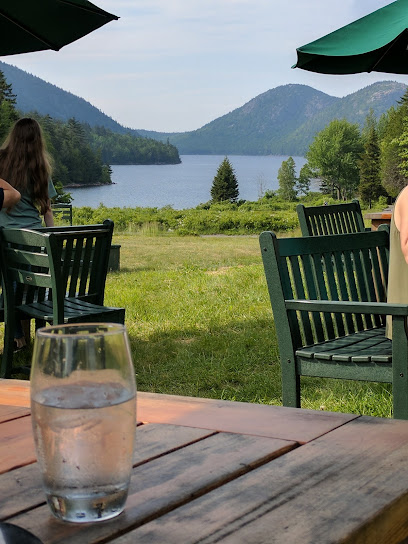
Thirsty Whale Tavern
Experience the best of Bar Harbor dining at Thirsty Whale Tavern, where mouthwatering seafood and burgers meet a vibrant coastal atmosphere.

The Chart Room
Discover The Chart Room: A premier dining experience in Bar Harbor, serving fresh seafood with stunning waterfront views.

Paddy's Irish Pub & Restaurant
Discover the authentic Irish pub experience at Paddy's Irish Pub & Restaurant in Bar Harbor, offering delicious food, craft beers, and vibrant atmosphere.

Testa's Bar & Grill
Experience the best of Maine's seafood at Testa's Bar & Grill in Bar Harbor, where fresh ingredients and local flavors come together.

Leary's Landing Irish Pub
Discover the heart of Irish culture at Leary's Landing Irish Pub in Bar Harbor, where good food, drink, and music unite to create lasting memories.

Havana
Discover the vibrant flavors and festive atmosphere of Havana, a premier Cuban restaurant in Bar Harbor, Maine, offering unforgettable culinary experiences.

McKay's Public House
Experience the charm of Bar Harbor at McKay's Public House, where organic cuisine meets an exquisite wine selection in a cozy atmosphere.

Dog & Pony Tavern
Experience the vibrant flavors of Bar Harbor at Dog & Pony Tavern, where delicious American cuisine meets a lively pub atmosphere.
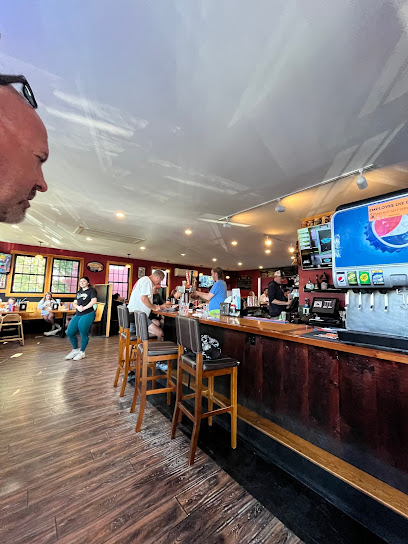
Finback Alehouse
Experience the essence of Bar Harbor at Finback Alehouse - a gastropub with exceptional food, local craft beers, and a cozy atmosphere.
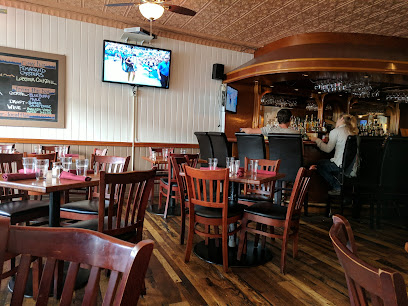
Bar Island Land Bridge
Discover the breathtaking Bar Island Land Bridge in Bar Harbor, Maine - a hiking paradise with stunning views and unique coastal experiences.

Project Social Kitchen & Bar
Experience the flavors of Maine at Project Social Kitchen & Bar, where local ingredients meet culinary creativity in Bar Harbor.
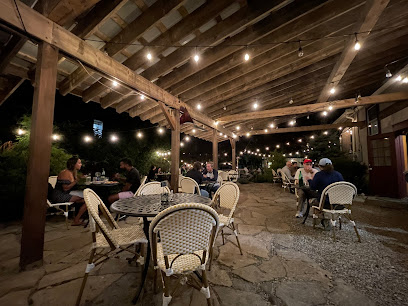
Cottage St. Pub
Discover the vibrant flavors and cozy atmosphere at Cottage St. Pub in Bar Harbor, where locals and tourists gather to enjoy delectable drinks and delicious food.

Local Phrases
-
- HelloBonjour
[bon-zhoor] - GoodbyeAu revoir
[oh reh-vwahr] - YesOui
[wee] - NoNon
[noh] - Please/You're welcomeS'il vous plaît/De rien
[seel voo pleh/day ryehn] - Thank youMerci
[mehr-see] - Excuse me/SorryExcusez-moi/Désolé
[ex-kew-zay mwah/day-zoh-lay] - How are you?Comment ça va?
[koh-mohn sa vah] - Fine. And you?Bien. Et vous?
[byen. ay voo] - Do you speak English?Parlez-vous anglais?
[par-lay voo ahn-glay] - I don't understandJe ne comprends pas
[zhuh nuh kohm-prahnd pah]
- HelloBonjour
-
- I'd like to see the menu, pleaseJe voudrais voir le menu, s'il vous plaît
[zhuh voo-dray vwar luh muh-nyoo, seel voo pleh] - I don't eat meatJe ne mange pas de viande
[zhuh nuh mahnj pah duh vyand] - Cheers!Santé!
[sahn-tay] - I would like to pay, pleaseJe voudrais payer, s'il vous plaît
[zhuh voo-dray pay-yay, seel voo pleh]
- I'd like to see the menu, pleaseJe voudrais voir le menu, s'il vous plaît
-
- Help!Au secours!
[oh suh-coor] - Go away!Allez-vous en!
[ahl-ay voo zahn] - Call the Police!Appelez la police!
[ah-puh-lay lah poh-lees] - Call a doctor!Appelez un médecin!
[ah-puh-lay uh meh-duh-sahn] - I'm lostJe suis perdu
[zhuh swee pair-doo] - I'm illJe suis malade
[zhuh swee mah-lahd]
- Help!Au secours!
-
- I'd like to buy...Je voudrais acheter...
[zhuh voo-dray zah-shey...] - I'm just lookingJe regarde juste
[zhuh ruh-gard zhew-stuh] - How much is it?Combien ça coûte?
[kohm-byen sah koot] - That's too expensiveC'est trop cher
[say troh shehr] - Can you lower the price?Pouvez-vous baisser le prix?
[poo-veh voo bay-say luh pree]
- I'd like to buy...Je voudrais acheter...
-
- What time is it?Quelle heure est-il?
[kell ur ay eel] - It's one o'clockIl est une heure
[eel ay tun ur] - Half past (10)Dix et demi
[dees ay duh-mee] - MorningMatin
[mah-tahn] - AfternoonAprès-midi
[ah-pray mee-dee] - EveningSoir
[swahr] - YesterdayHier
[yehr] - TodayAujourd'hui
[oh-zhoor-dwee] - TomorrowDemain
[duh-mahn] - 1Un
[uh] - 2Deux
[duh] - 3Trois
[twah] - 4Quatre
[kah-truh] - 5Cinq
[sank] - 6Six
[sees] - 7Sept
[sept] - 8Huit
[weet] - 9Neuf
[nuhf] - 10Dix
[dees]
- What time is it?Quelle heure est-il?
-
- Where's a/the...?Où est...?
[oo ay...] - What's the address?Quelle est l'adresse?
[kell ay la-dress] - Can you show me (on the map)?Pouvez-vous me montrer (sur la carte)?
[poo-veh voo muh mohn-tray (soor lah kart)] - When's the next (bus)?Quand est le prochain (bus)?
[kahnd ay luh proh-shay (bus)] - A ticket (to ....)Un billet (pour ....)
[uhn bee-yay (poor)]
- Where's a/the...?Où est...?
History of Acadia National Park
-
Long before European settlers arrived, the area now known as Acadia National Park was home to the Wabanaki Confederacy, which includes the Penobscot, Passamaquoddy, Maliseet, and Mi'kmaq tribes. These indigenous people thrived in the region for thousands of years, relying on its abundant natural resources for hunting, fishing, and gathering. They developed a deep spiritual connection with the land, which remains significant to their descendants today.
-
The first European to document the area was the French explorer Samuel de Champlain in 1604. He named the land 'Isles des Monts Déserts,' which translates to 'Islands of the Bare Mountains,' due to the rugged, treeless summits he observed. French Jesuit missionaries and fur traders were among the first settlers, establishing a foothold in the early 17th century. The area changed hands between the French and British multiple times over the next century, deeply influencing its cultural landscape.
-
By the late 19th century, Acadia became a favored summer retreat for America's elite, including influential figures like John D. Rockefeller Jr. and George B. Dorr. This period, known as the Gilded Age, saw the construction of opulent summer 'cottages' and the development of extensive carriage roads, many of which are still in use today. These wealthy patrons played a crucial role in the conservation efforts that led to the establishment of the park.
-
Acadia National Park was officially established on July 8, 1916, initially named Sieur de Monts National Monument. It became Lafayette National Park in 1919, in honor of the Marquis de Lafayette, a French supporter of the American Revolution. Finally, in 1929, it was renamed Acadia National Park to reflect the region's French heritage. George B. Dorr, often called the 'Father of Acadia,' was instrumental in its creation, dedicating his life and personal resources to preserving the area.
-
One of the most significant events in the park's history was the Great Fire of 1947. Starting on October 17, the fire raged for over ten days, destroying much of Bar Harbor and nearly 17,000 acres of Acadia National Park. The devastation led to a massive rebuilding effort, which included replanting trees and restoring damaged trails and roads. The fire had a lasting impact on the park's landscape and ecosystem, which visitors can still observe today.
-
Today, Acadia National Park is a testament to successful conservation efforts, drawing millions of visitors annually. The park offers a wide range of recreational activities, including hiking, biking, birdwatching, and ocean kayaking. It continues to benefit from the support of organizations like Friends of Acadia, which work tirelessly to preserve its natural beauty and ensure sustainable tourism practices. The park also serves as a living laboratory for scientific research, contributing valuable insights into environmental and ecological studies.
Acadia National Park Essentials
-
Acadia National Park is located on Mount Desert Island in Maine. The nearest major airport is Bangor International Airport, approximately 50 miles away. From the airport, you can rent a car or take a shuttle service to reach the park. Alternatively, Portland International Jetport is about 175 miles away, offering more flight options. For those driving, Acadia is accessible via U.S. Route 1 and State Route 3.
-
Within Acadia National Park, the Island Explorer bus service offers free transportation to various points of interest from late June to early October. The service is eco-friendly and helps reduce traffic congestion. For more flexibility, consider renting a car or bringing your own. Biking is another popular way to explore the park; the Carriage Roads offer 45 miles of scenic, car-free routes.
-
The official currency in the United States is the U.S. Dollar (USD). Credit and debit cards are widely accepted in Bar Harbor and nearby towns. ATMs are available, but it's advisable to carry some cash for smaller establishments and park services that may not accept cards.
-
Acadia National Park is generally safe for tourists. However, it's essential to follow standard safety precautions. Avoid wandering off marked trails and always inform someone about your hiking plans. The towns around Acadia, like Bar Harbor, have low crime rates, but it's still wise to keep an eye on your belongings in crowded areas.
-
In case of emergency, dial 911. The park has several ranger stations where you can seek assistance. Bar Harbor has a medical center for non-life-threatening medical issues. It's advisable to have travel insurance that covers medical emergencies. For minor health issues, pharmacies in Bar Harbor can provide over-the-counter medications.
-
Fashion: Do wear comfortable hiking clothes and sturdy shoes. Layered clothing is recommended due to changing weather conditions. Religion: Do respect the natural environment and the spiritual significance it holds for some visitors. Public Transport: Do use the Island Explorer bus to reduce your carbon footprint. Don't forget to check the bus schedule. Greetings: Do greet locals and fellow hikers with a friendly 'hello.' Eating & Drinking: Do try local seafood delicacies like lobster. Don't leave food scraps behind as it can attract wildlife.
-
To experience Acadia National Park like a local, visit during the shoulder seasons (late spring or early fall) to avoid crowds. Attend ranger-led programs to learn about the park's history and ecology. Visit local farmers' markets in Bar Harbor to taste fresh, regional produce. Don't miss the sunrise at Cadillac Mountain, the first place to see the sunrise in the United States during certain times of the year.
Trending Landmark in Acadia National Park
-
Bass Harbor Head Light Station
-
Thunder Hole
-
Jordan Pond House Restaurant
-
Hulls Cove Visitor Center
-
Cadillac Mountain
-
Asticou Azalea Garden
-
Wild Gardens of Acadia
-
Jordan Pond Trailhead
-
Ocean Path Trailhead
-
Jordan Pond
-
Thuya Garden
-
Bubble Rock
-
Acadia National Park Tours
-
Mt Desert Island
-
George B. Dorr Museum of Natural History
Nearby Cities to Acadia National Park
-
Things To Do in Bar Harbor
-
Things To Do in Camden
-
Things To Do in Bangor
-
Things To Do in Rockland
-
Things To Do in Waterville
-
Things To Do in Augusta
-
Things To Do in Brunswick
-
Things To Do in Lewiston
-
Things To Do in South Portland
-
Things To Do in Saco
-
Things To Do in Biddeford
-
Things To Do in Kennebunkport
-
Things To Do in Ogunquit
-
Things To Do in Dover
-
Things To Do in Exeter













